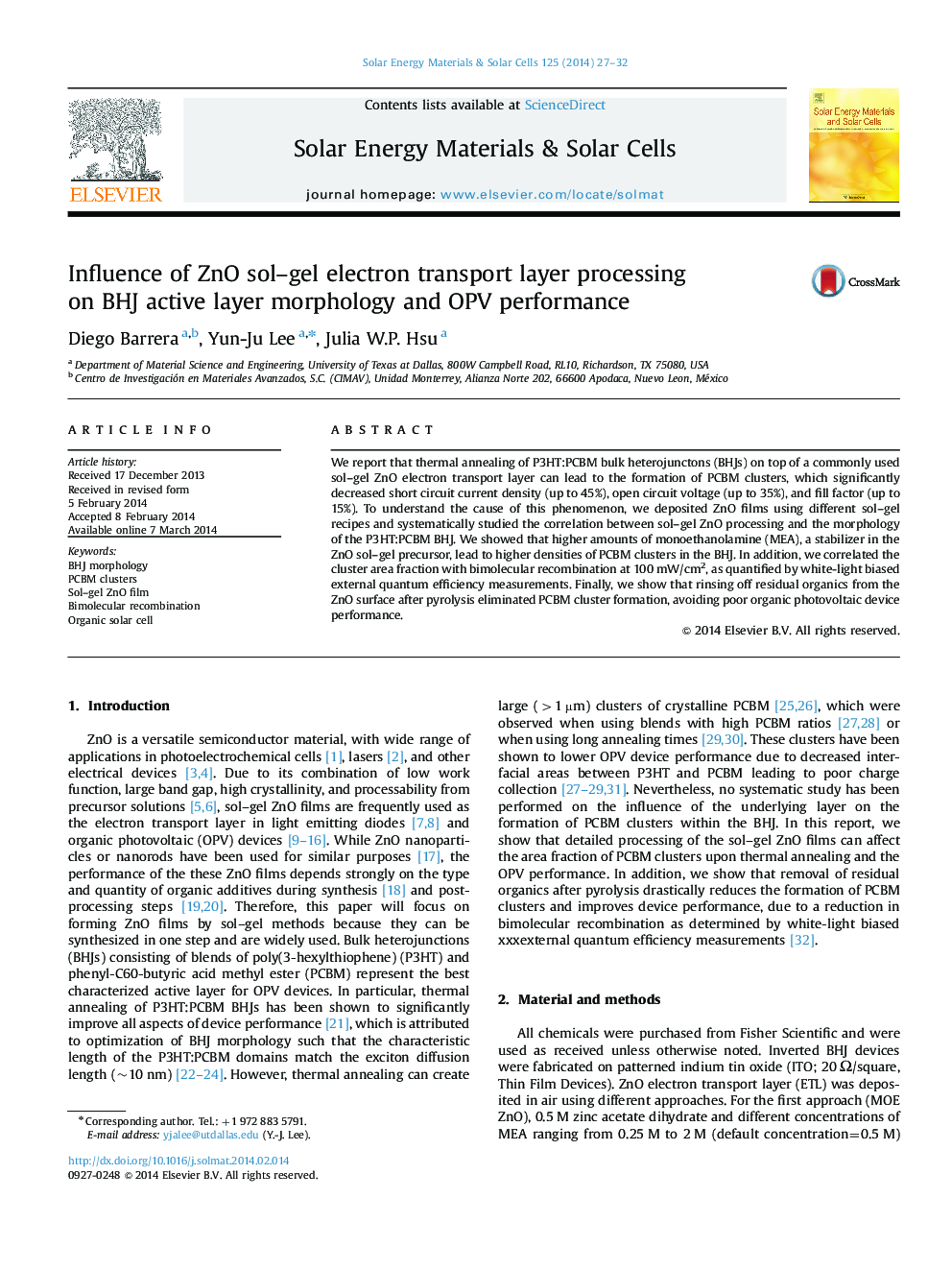| کد مقاله | کد نشریه | سال انتشار | مقاله انگلیسی | نسخه تمام متن |
|---|---|---|---|---|
| 78078 | 49316 | 2014 | 6 صفحه PDF | دانلود رایگان |

• Annealing of organic photovoltaic devices on sol–gel ZnO led to PCBM clusters.
• Spectroscopy showed that residual organics after ZnO pyrolysis induced PCBM cluster formation.
• Higher PCBM cluster area fraction correlated to lower device performance.
• Higher bimolecular recombination with cluster area fraction explained lower performance.
• Removal of organics minimized PCBM clusters and restored good device performance.
We report that thermal annealing of P3HT:PCBM bulk heterojunctons (BHJs) on top of a commonly used sol–gel ZnO electron transport layer can lead to the formation of PCBM clusters, which significantly decreased short circuit current density (up to 45%), open circuit voltage (up to 35%), and fill factor (up to 15%). To understand the cause of this phenomenon, we deposited ZnO films using different sol–gel recipes and systematically studied the correlation between sol–gel ZnO processing and the morphology of the P3HT:PCBM BHJ. We showed that higher amounts of monoethanolamine (MEA), a stabilizer in the ZnO sol–gel precursor, lead to higher densities of PCBM clusters in the BHJ. In addition, we correlated the cluster area fraction with bimolecular recombination at 100 mW/cm2, as quantified by white-light biased external quantum efficiency measurements. Finally, we show that rinsing off residual organics from the ZnO surface after pyrolysis eliminated PCBM cluster formation, avoiding poor organic photovoltaic device performance.
Journal: Solar Energy Materials and Solar Cells - Volume 125, June 2014, Pages 27–32